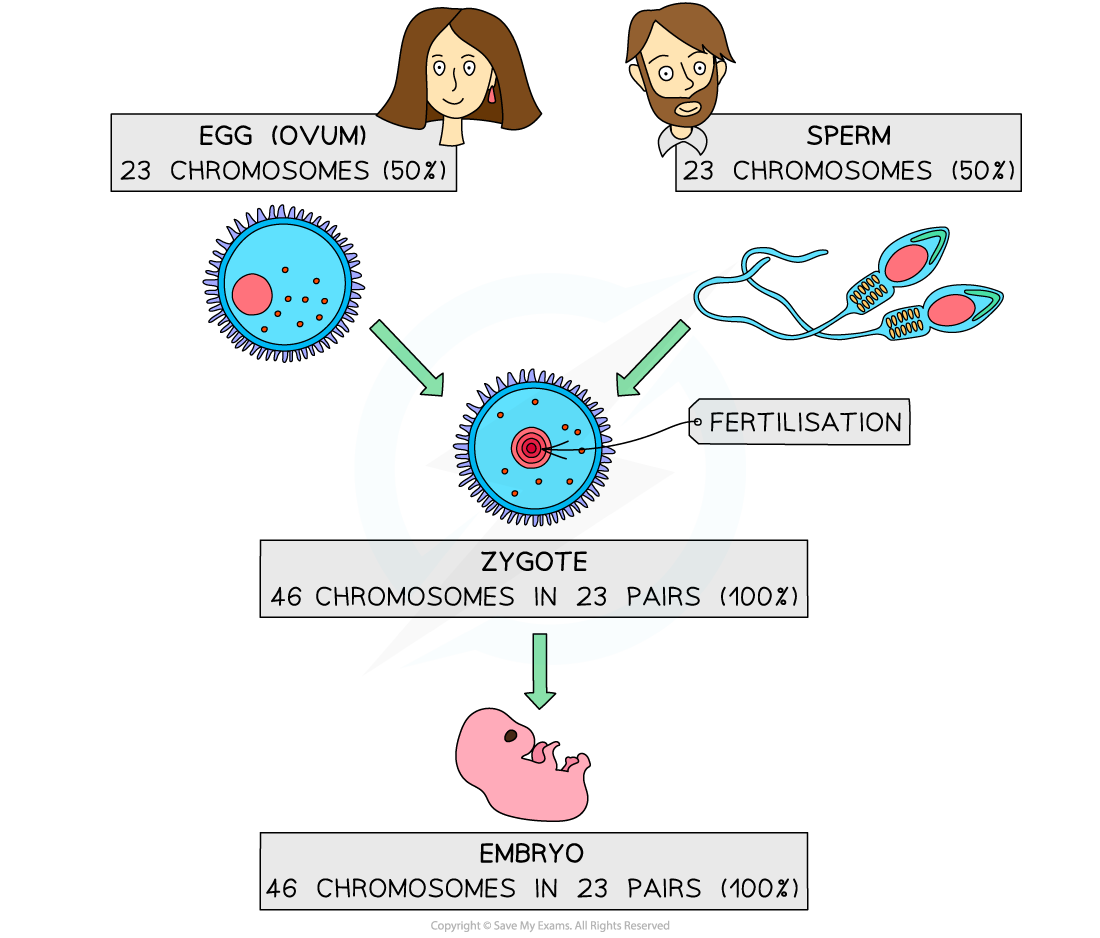Sexual Reproduction
- Sexual reproduction is a process involving the fusion of the nuclei of two gametes to form a zygote (fertilised egg cell) and the production of offspring that are genetically different from each other
- The gametes of animals are the sperm cells and egg cells
- The gametes of flowering plants are the pollen cells and egg cells
- Fertilisation is defined as the fusion of gamete nuclei, and as each gamete comes from a different parent, there is variation in the offspring
- The formation of gametes involves meiosis

Animal gametes for sexual reproduction
Advantages and Disadvantages of Sexual Reproduction Table





